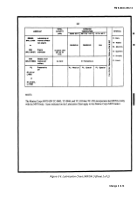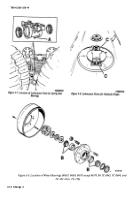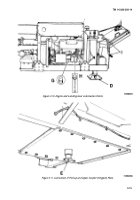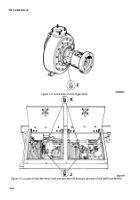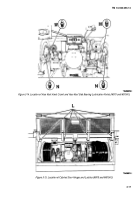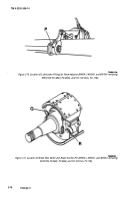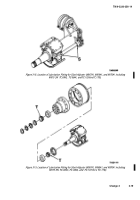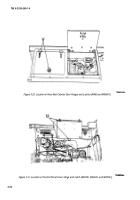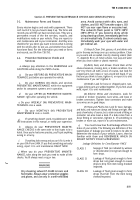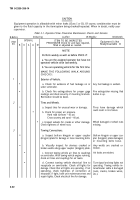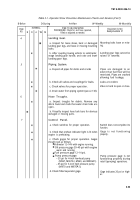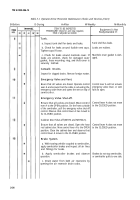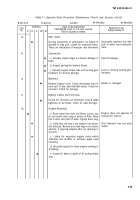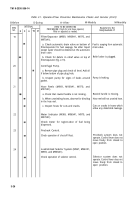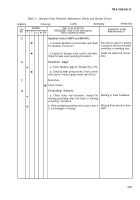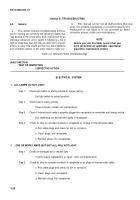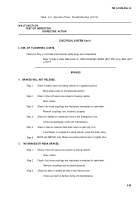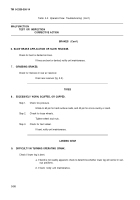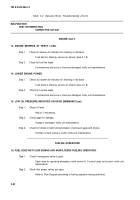TM-9-2330-356-14
SEMITRAILER, TANK: 5000 GALLON, BULK HAUL, SELF LOAD/UNLOAD M967 AND M967A1; SEMITRAILER, TANK: 5000 GALLON, FUEL DISPENSING, AUTOMOTIVE M969 AND M969A1; SEMITRAILER, TANK: 5000 GALLON, FUEL DISPENSING, UNDER/OVERWING AIRCRAFT M970 AND M970A1
TECHNICAL MANUAL; OPERATOR’S, UNIT, DIRECT SUPPORT, AND GENERAL SUPPORT MAINTENANCE MANUAL
OCTOBER 1990
TM-9-2330-356-14 - Page 119 of 528
TM 9-2330-356-14
Table 3-1. Operator/Crew Preventive Maintenance Checks and Services (Con‘t).
B-Before
D-During
A-After
W-Weekly
M-Monthly
ITEM
NO.
4
5
6
7
B
INTERVAL
D
A
W
M
ITEM TO BE INSPECTED
PROCEDURE: Check for and have repaired,
filled or adjusted as needed.
Landing Gear.
a. Inspect for loose shoes, bent or damaged
landing gear legs, and loose or missing mounting
bolts.
b. After coupling towing vehicle to semitrailer,
enage landing gear handle, and raise and lower
landing gear legs.
Piping System.
a. Inspect all pipes for dents and cracks
b. Check all valves and couplings for leaks.
c. Check valves for proper operation.
d. Drain water from piping system (para 2-13d).
Hose Troughs.
a. Inspect troughs for debris. Remove any
debris found and check that water drain holes are
open.
b. Visually inspect hose lock bars for obvious
damaged or missing parts.
Control Panel.
a. Check switches for proper operation.
b. Check that preheat indicator light is lit when
engine is preheating.
c. Check gages for proper operation. Gages
should read as follows:
Voltmeter 12–14V with engine running,
Oil pressure gage 30–40 psi with engine
warm and running.
Fuel pressure gage 12–14 psi.
Pump pressure gage:
– 30 psi for 4-inch low-head pump
(M967, M967A1, M969, and M969A1).
– 65 psi for 3-inch high pressure pump
(M970 and M970A1).
d. Check filter/separator gage.
Equipment Is Not
Ready/Available If:
Mounting bolts loose or miss-
ing.
Landing gear legs cannot be
raised or lowered.
Pipes are damaged to an
extent that fuel flow will be
restricted. Pipes are cracked
allowing fuel leakage.
Leaks are evident.
Valve is hard to open or close.
Switch does not complete its
function.
Gage is not functioning
properly.
Pump pressure gage is not
functioning properly during
retail (pumping) operations.
Gage indicates 20 psi or high-
er.
3-23
Back to Top

